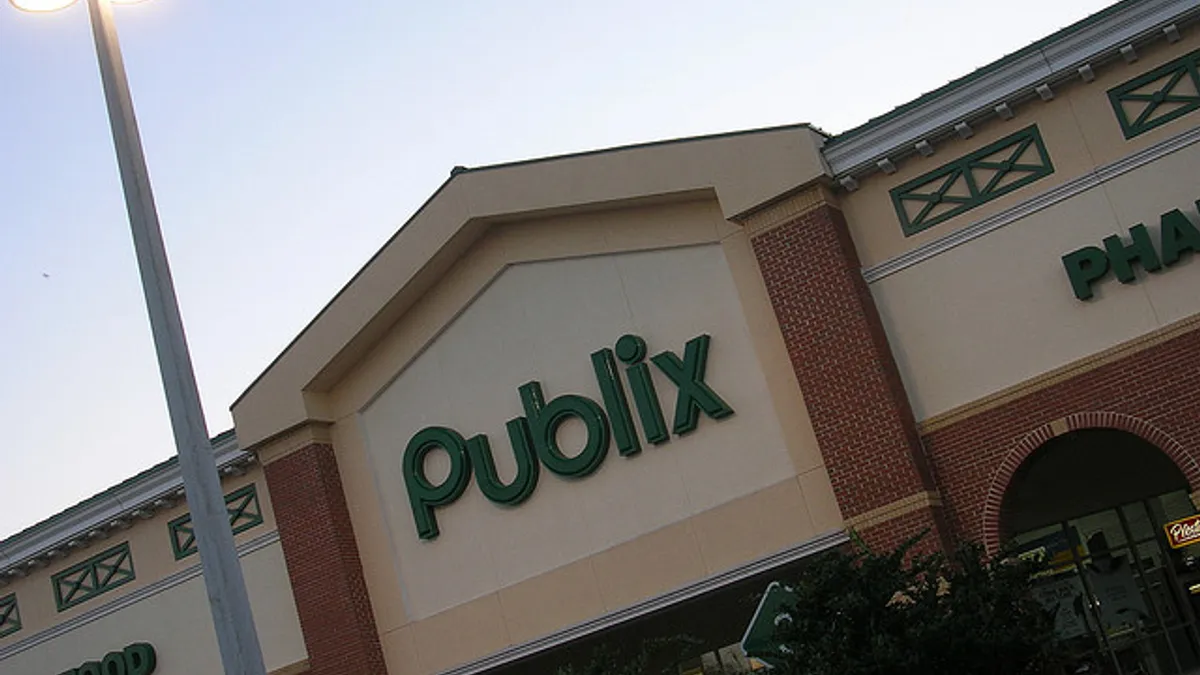Dive Brief:
- Publix is partnering with Instacart to offer same-day grocery delivery from all 1,147 of its stores by 2020, according to a company release.
- During the next five months, the service will quickly expand to key markets in the six states where Publix currently operates.
- The rollout is an expansion of Publix’s test run with Instacart, which began in Miami last July and expanded to the Tampa Bay region.
Dive Insight:
Publix’s e-commerce expansion reflects a growing consumer demand for online ordering and delivery. But the decision was no doubt heavily influenced by the competitive pressures it's facing from the likes of Walmart and Kroger.
In Publix’s home state of Florida, Walmart operates close to 400 stores and has rapidly expanded its click-and-collect services. Within the next few years, the company hopes to have curbside order pickup available at all 4,600 locations nationwide, putting pressure on many competitors, including Publix, to respond.
Walmart, along with discounter Aldi, have chipped away at Publix’s dominance in the Sunshine State where it operates nearly 800 stores. In addition to its e-commerce expansion, Walmart has steadily lowered prices and is remodeling many of its stores, while Aldi is undergoing a $1.6 billion store update initiative. Both competitors have grown market share in the state’s central region, according to The Shelby Report, while Publix has lost ground.
A savvy operator, Publix is expanding northward into the Carolinas and Tennessee, and will open several stores in Virginia beginning later this year. This growth has put Publix in some profitable, population-dense areas, but it’s also brought the company into direct competition with Kroger, Harris Teeter, Food Lion and other retailers that, in addition to being solid operators, are rapidly expanding their e-commerce programs. Kroger’s ClickList, in particular, is a popular convenience play coming from a close competitor, and has no doubt pressed Publix to counter.
Overall, Publix has been slow to expand its e-commerce capabilities despite having a pioneering spirit. The company briefly offered online grocery ordering way back in 2003, and ran a limited curbside pickup program from 2010 to 2012. It also has offered some limited services, including online ordering on some of its bakery and deli items. Its past failures may explain, at least in part, why the company waited so long to test curbside delivery with Instacart, and why it waited nearly a year to expand the program.
Considering the inroads its competitors have made with customers and the razor-thin margins involved, it will be difficult for Publix to profit off its expansion with Instacart. The retailer will have the advantage of home delivery over Kroger and Walmart, which could help it steal some business. But both competitors are keen on expanding into home delivery, meaning Publix likely won’t have that advantage for long. Kroger and Walmart also may have an advantage by virtue of running their own e-commerce programs. With a growing number of grocers signing on with Instacart and other third-party services, the question of how interchangeable grocers will be in the online space, and how much they will "own" the customer experience, lingers.
The real winner here may be Instacart, which further solidifies its dominance in grocery e-commerce with this deal. The provider currently owns 50% market share amongst third-party online grocery providers — more than twice that of competitors Shipt and AmazonFresh — and plans to be available to 80% of U.S. grocery consumers by the end of next year.









